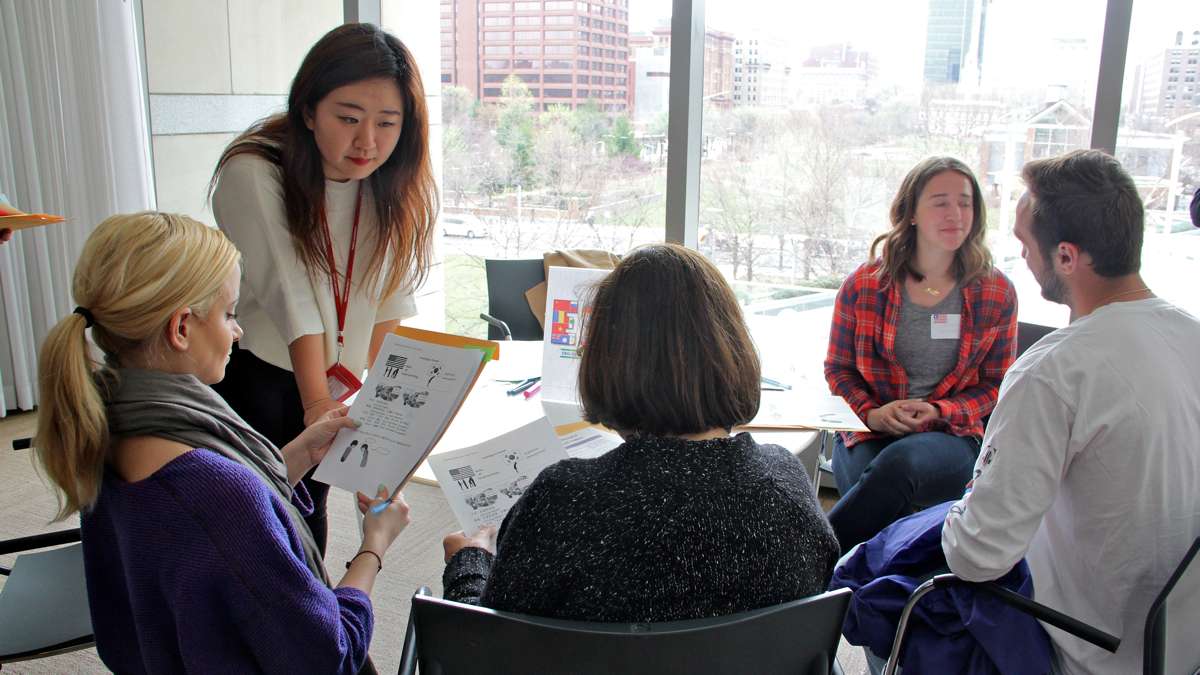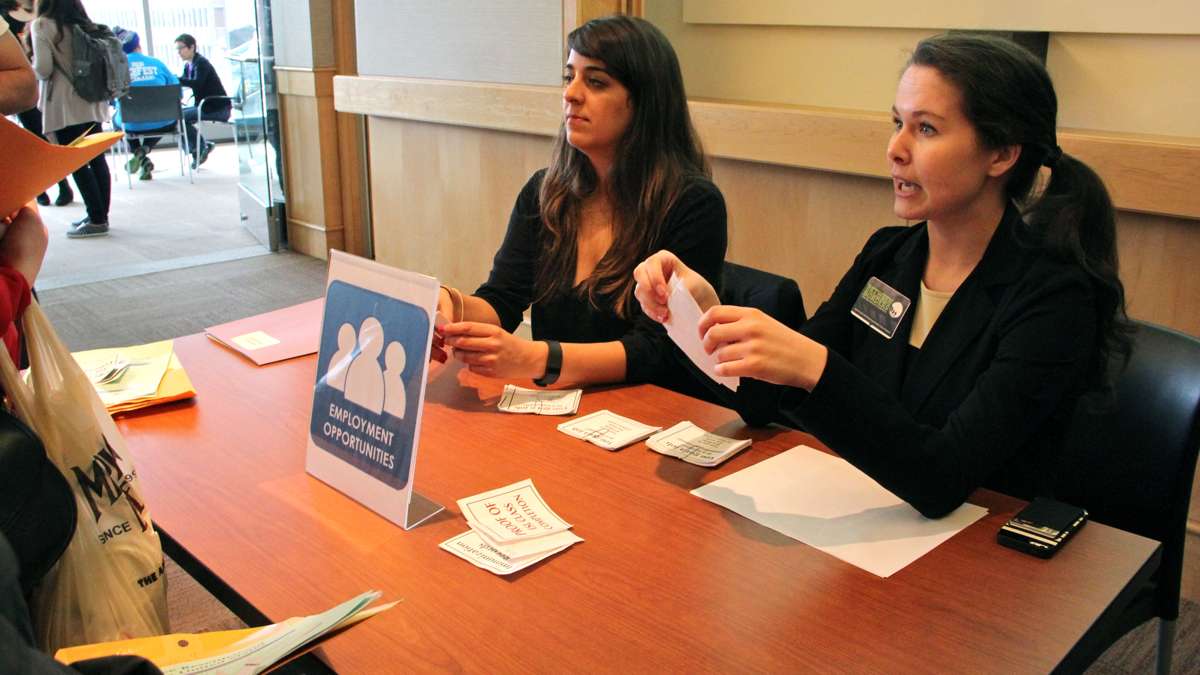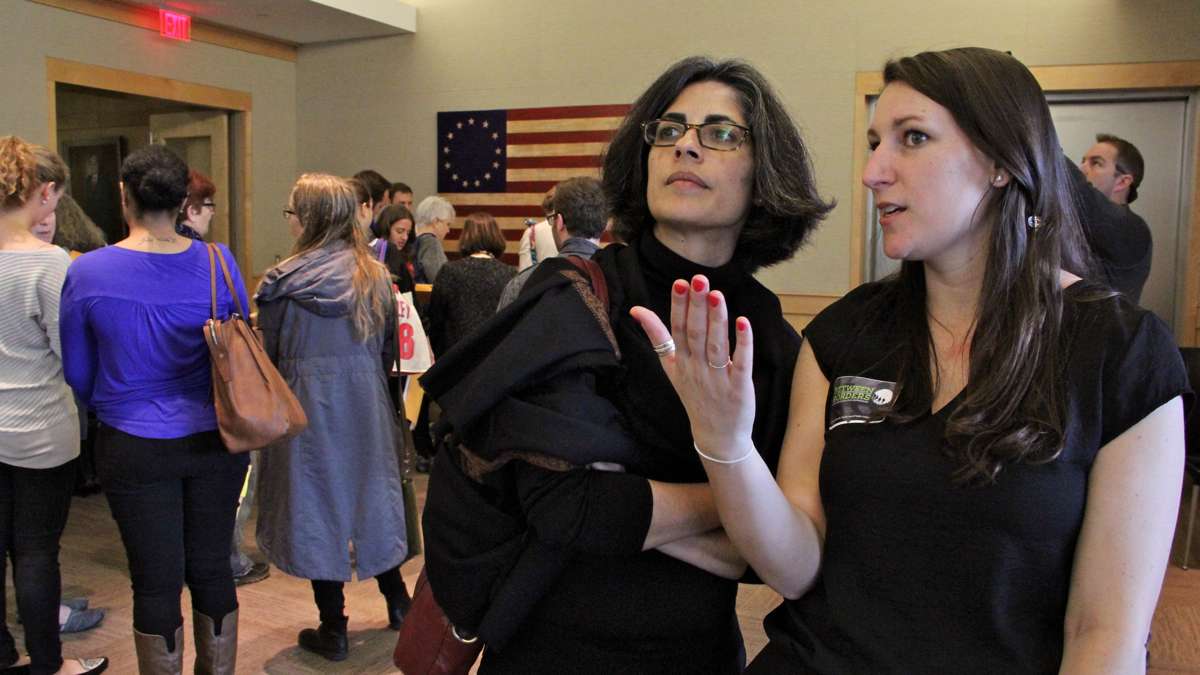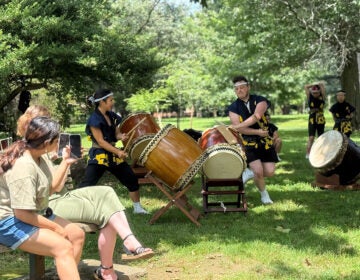For a day, walking in the shoes of refugees
ListenEvery day, we hear reports about refugees fleeing areas of conflict.
But how does it really feel to be one among the 15 million displaced?
That was the question a group of about a hundred people explored by re-enacting the journey of some of those families.
Most refugees live in a state of suspended animation. They lose their sense of place and time and future. But just hearing their stories do you truly understand what they’re going through?
Doubt about that inspired Lilah Thompson, a Temple University public policy scholar, to create a large simulation exercise, “Between Borders,” that would bring the refugees’ feelings of displacement and uncertainty to life.
Thompson recently transformed spaces at Philadelphia’s National Constitution Center into makeshift offices, refugee camps and health clinics, then populated them with volunteers who played the roles of officials. Thompson wanted to illustrate the refugees’ personal journeys, which can range from six months to more than five years.
“It’s putting individuals in another identity so that they take on the humanity of another person,” she said. “Understanding every step of the process they go through — from fleeing their country and leaving everything behind to going a refugee camp.
“Understanding what it’s like to be there, what is the food like, schools … the things you face on a daily basis.”
Taking on the role of refugees
Each participant received an envelope with their refugee’s story – along with instructions not to “break character” from the assigned role.
Law student Grace Shedun became a refugee from Syria going to Jordan.
“Both of my parents were killed in from of me and my only sibling was forced to enter the army, so I was by myself,” she said.
At the end of the day, returning to her real identity, Shedun said the experience was powerful.
“I would like some day to help people in the situation of the lady I’m playing today,” she said.
Story after story touched on fear, hardship, resilience and survival.
“The last convoy who was leaving for Monrovia was the only chance we had. We first tried going to Sierra Leone,” a grandmother read from the family’s assigned narrative.”
This family ended up staying for months at a Sierra Leone camp. Outside each camp, staffers from the U.N. Refugee Agency registered and interviewed each family member to start the long process of relocation.
They received a fat envelope of old and new documents to carry from desk to desk, from checkpoint to checkpoint. After waiting and waiting, the family finally got news from a man playing the role of a U.S. immigration official.
“This family has been granted refugee status, and we are going to get them to the United States,” said the official. “Within 18 months, mom and dad, hopefully, will get a job and will pay back the cost of the flight.”
Once in the U.S., the refugees receive assistance for a limited time, and must find work, get settled and begin a new life on their own.
Most American families once sought refuge
In 2015, nearly 70,000 slots were allocated to refugees for admission to the U.S. This year, the proposed resettlement number is 85,000, said law professor Jaya Ramji-Nogales, the co-director of Temple’s Institute for International Law and Public Policy.
An authority in refugee law and policy, Ramji-Nogales co-designed the Between Borders project. The takeaway, she said, is to remember that if you search the family trees of most Americans thoroughly, you’ll find a history of refugees or displaced immigrants.
“People start to forget that, who we are as a nation and compassion toward people who are fleeing situations that any one of us would flee from,” she said. “I look at these people fleeing with their children.
“I have two small children, and you have to understand there has to be something really severe driving them to get on a dingy trying to get to Europe.”
The overall experience of the Between Borders project was not lost on 21-year-old student Patricia Moore.
“I think it gave me more perspective over what refugees go through to make it to another country,” she said. “What I have now is more respect for them and for their struggle.”
WHYY is your source for fact-based, in-depth journalism and information. As a nonprofit organization, we rely on financial support from readers like you. Please give today.










